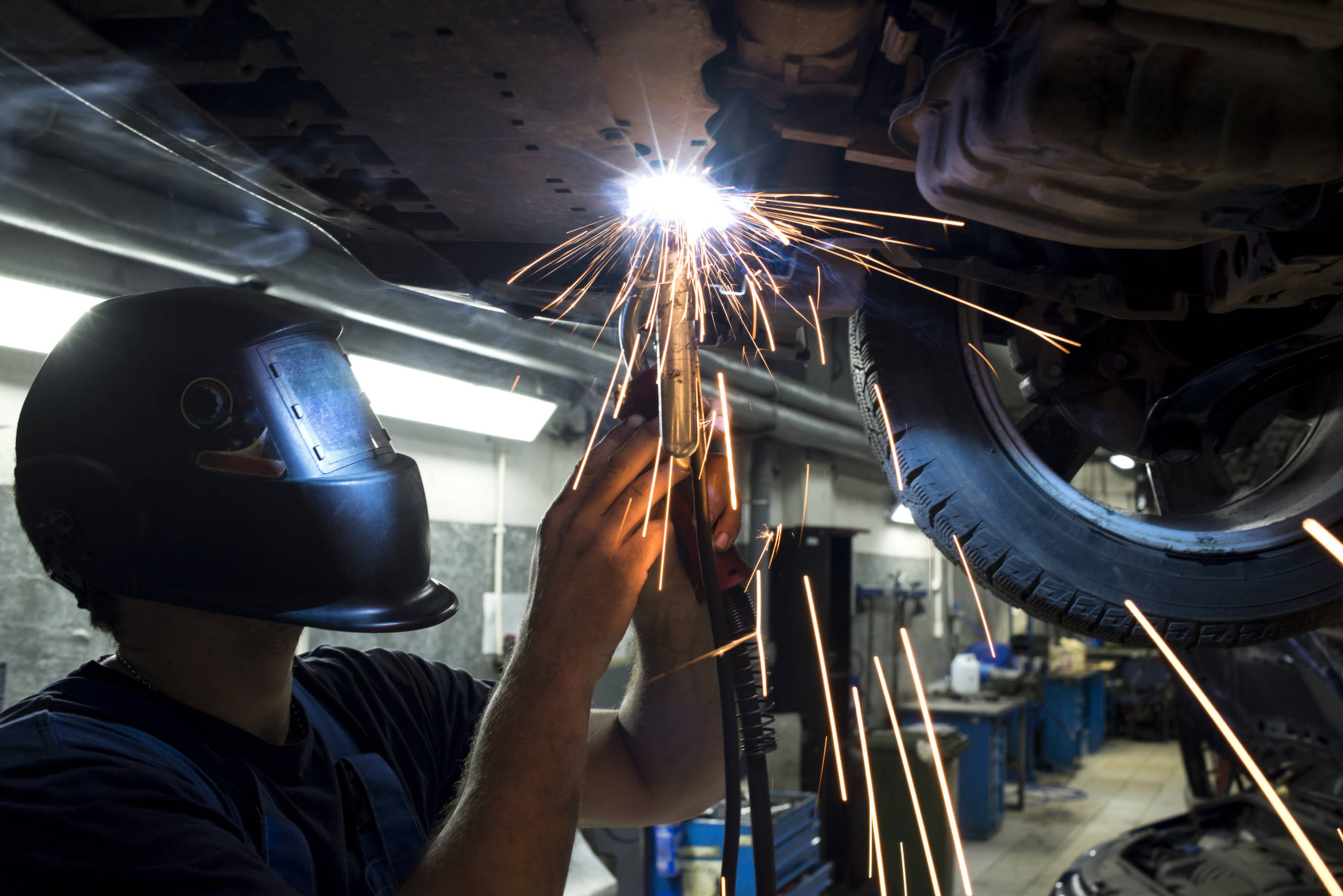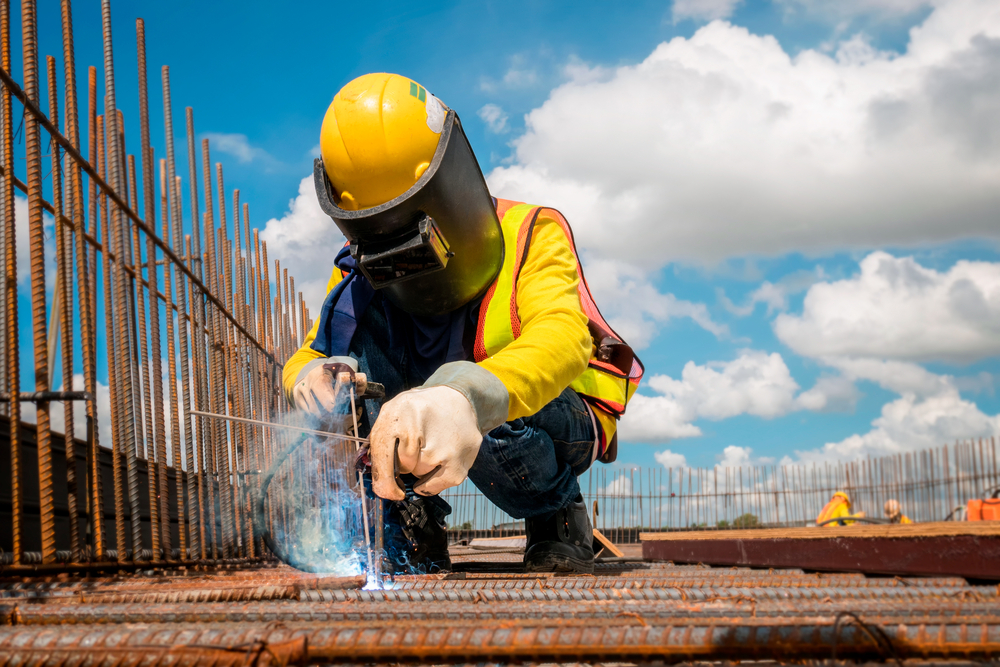All Concerning Welding: Key Insights Into Techniques and Best Practices for Success
Welding incorporates a variety of strategies, each suited for certain materials and applications. Comprehending these approaches, such as GMAW, SMAW, and TIG, is vital for attaining optimal outcomes. Furthermore, the appropriate equipment and security techniques can not be overlooked. As prep work and fixing play essential functions in the welding procedure, grasping these components can substantially boost the high quality of the final product. What are the essential variables that assure an effective weld?
Understanding Different Welding Methods
Welding methods incorporate a variety of methods, each matched to details applications and materials. Amongst the most typical techniques are Gas Metal Arc Welding (GMAW), Protected Steel Arc Welding (SMAW), and Tungsten Inert Gas Welding (TIG) GMAW, likewise referred to as MIG welding, is prominent for its rate and convenience, making it ideal for thin products. SMAW, or stick welding, is favored for its simpleness and performance in exterior atmospheres, particularly with thicker metals. TIG welding uses precision and control, making it ideal for detailed job and non-ferrous metals (Belgrade Welding). Each strategy has its unique benefits and factors to consider, enabling welders to pick the best approach based on the job's requirements, product type, and desired outcomes. Understanding these techniques is vital for successful welding
Important Welding Devices and Tools
While numerous welding methods need specific skills, the ideal devices and devices are equally necessary for attaining high quality outcomes. Necessary welding devices includes welding devices, which vary relying on the strategy-- such as MIG, TIG, or stick welding. Safety gear, consisting of handwear covers, aprons, and safety helmets, guarantees safety and convenience during the process. In enhancement, components and clamps assist secure materials in area, making sure accuracy in welds. Consumables like welding poles, cord, and protecting gas are likewise crucial elements that influence the high quality of the weld. Devices such as mills and cutters promote surface area preparation and post-weld finishing, contributing to a professional result. Purchasing top notch tools ultimately enhances the effectiveness and efficiency of welding tasks.
Safety Practices in Welding
Appropriate safety and security practices are important in the welding industry to secure workers from possible hazards. Welders have to use proper individual protective tools (PPE), including helmets with correct shading, gloves, and flame-resistant clothing. Adequate air flow is vital to lower direct exposure to harmful fumes and gases generated throughout the welding procedure. In addition, employees need to be educated in the proper handling of welding equipment to prevent crashes. Fire precaution, such as keeping combustible materials far from the welding area and having fire extinguishers easily available, are essential. Normal assessments of devices and workspaces can aid recognize possible dangers before they result in accidents. By adhering to these safety practices, welders can create a much safer working atmosphere and minimize dangers related to their profession.
Readying Products for Welding
Preparing products for welding is a crucial step that considerably affects the top quality and stability of the final product (Montana Mobile Welding and Repair Belgrade). Proper preparation includes cleaning up the surfaces to remove impurities such as corrosion, oil, and dirt, which can endanger the weld. Methods such as grinding, sanding, or making use of solvents are generally used to achieve a tidy surface. Furthermore, making sure that the materials fit together well is necessary; spaces can result in weak welds. It's additionally important to take into consideration the placement and positioning of the components, as this will affect the ease of welding and the last outcome. Picking the appropriate filler product and guaranteeing compatibility with the base metals is important for attaining solid, resilient welds.
Tips for Getting High-Quality Welds
Accomplishing top quality welds requires attention to detail and adherence to ideal techniques throughout the welding process. Correct joint prep work is important, making sure surface areas are cost-free and clean from pollutants. Picking the proper filler product and welding method based on the base metals is critical for excellent bonding. Maintaining consistent travel speed and angle while welding can prevent problems and promote uniformity. Additionally, regulating warmth input is necessary; extreme warmth can result in warping and deteriorated joints. If required, frequently examining the welds during the process permits for immediate modifications. Lastly, employing ideal post-weld treatments, such as cleaning and tension alleviation, can boost the longevity and integrity of the weld, eventually guaranteeing a successful outcome.
Troubleshooting Common Welding Issues
Welding often presents challenges that can influence the top quality and honesty of the end product. Common concerns such as porosity, irregular weld grains, and overheating can emerge, each calling for specific repairing strategies. Recognizing these troubles is crucial for welders to improve their abilities and attain optimal results.
Porosity Troubles Discussed
Although porosity can typically be forgotten, it stays a crucial concern in welding that can compromise the integrity of a completed item. Porosity describes the existence of tiny gas pockets within the weld bead, which can weaken the joint and lead to premature failing. This issue usually arises from impurities, wetness, or inappropriate shielding gas coverage throughout the welding procedure. To alleviate porosity, welders must validate that the base products are tidy and completely dry, utilize proper protecting gases, and maintain regular welding parameters. Consistently inspecting the tools and setting can also help determine possible problems prior to they show up in the weld. Dealing with porosity efficiently is important for accomplishing strong, sturdy welds that meet high quality requirements.

Irregular Weld Beans
Inconsistent weld grains can substantially affect the top quality and stamina of a completed item. Numerous aspects contribute read the full info here to this issue, including improper traveling speed, wrong amperage settings, and inconsistent electrode angles. When the welder relocates too quickly, a grain may appear narrow and do not have penetration, while relocating as well slowly can create too much accumulation. Additionally, making use of the wrong amperage can result in either damaging or excessive spatter, both of which compromise weld integrity. The welder's strategy, such as inconsistent lantern activity, can additionally cause uneven bead look. To mitigate these issues, welders need to focus on keeping stable, controlled movements and making certain proper tools setups to attain uniformity in their welds. Uniformity is crucial to accomplishing solid and reliable welds.
Overheating and Bending Issues
Too much heat during the welding procedure can lead to considerable overheating and warping issues, influencing the structural stability of the work surface. These troubles usually manifest as distortion, which can jeopardize positioning and fit-up, making further assembly challenging. Aspects adding to overheating consist of the choice of welding parameters, such as voltage and travel speed, in addition to the kind of product being bonded. To mitigate these issues, welders should preserve regular traveling speed and proper warmth input while keeping track of the work surface temperature level. In addition, pre-heating or post-weld warm treatment can help relieve stresses triggered by rapid cooling - Fabrication. Regular inspection and adherence to best practices are important in protecting against overheating and making sure the long life and dependability of welded structures
Frequently Asked Inquiries
What Are the Occupation Opportunities in the Welding Industry?
The welding sector provides varied profession chances, consisting of settings as welders, teachers, inspectors, and designers. Specialists can function in production, building, aerospace, and automobile industries, gaining from strong demand and competitive wages in different duties.
Exactly How Can I Improve My Welding Rate Without Compromising Top Quality?
To enhance welding rate without sacrificing high quality, one should exercise reliable methods, keep equipment, enhance settings, and boost hand-eye coordination. Normal training and seeking responses can also greatly contribute to achieving quicker, premium welds.
What Qualifications Are Available for Welders?
Countless certifications exist for welders, consisting of those from the American Welding Society (AWS), the National Facility for Construction Education And Learning and Research (NCCER), and numerous industry-specific organizations. These qualifications enhance employability and demonstrate skill proficiency.
Just How Does Welding Affect the Features of Metals?
Welding influences the residential properties of steels by altering their microstructure, which can lead to modifications in ductility, strength, and solidity. Warm input and cooling prices throughout the procedure significantly impact these product characteristics.
Can I Weld Dissimilar Metals With Each Other?
